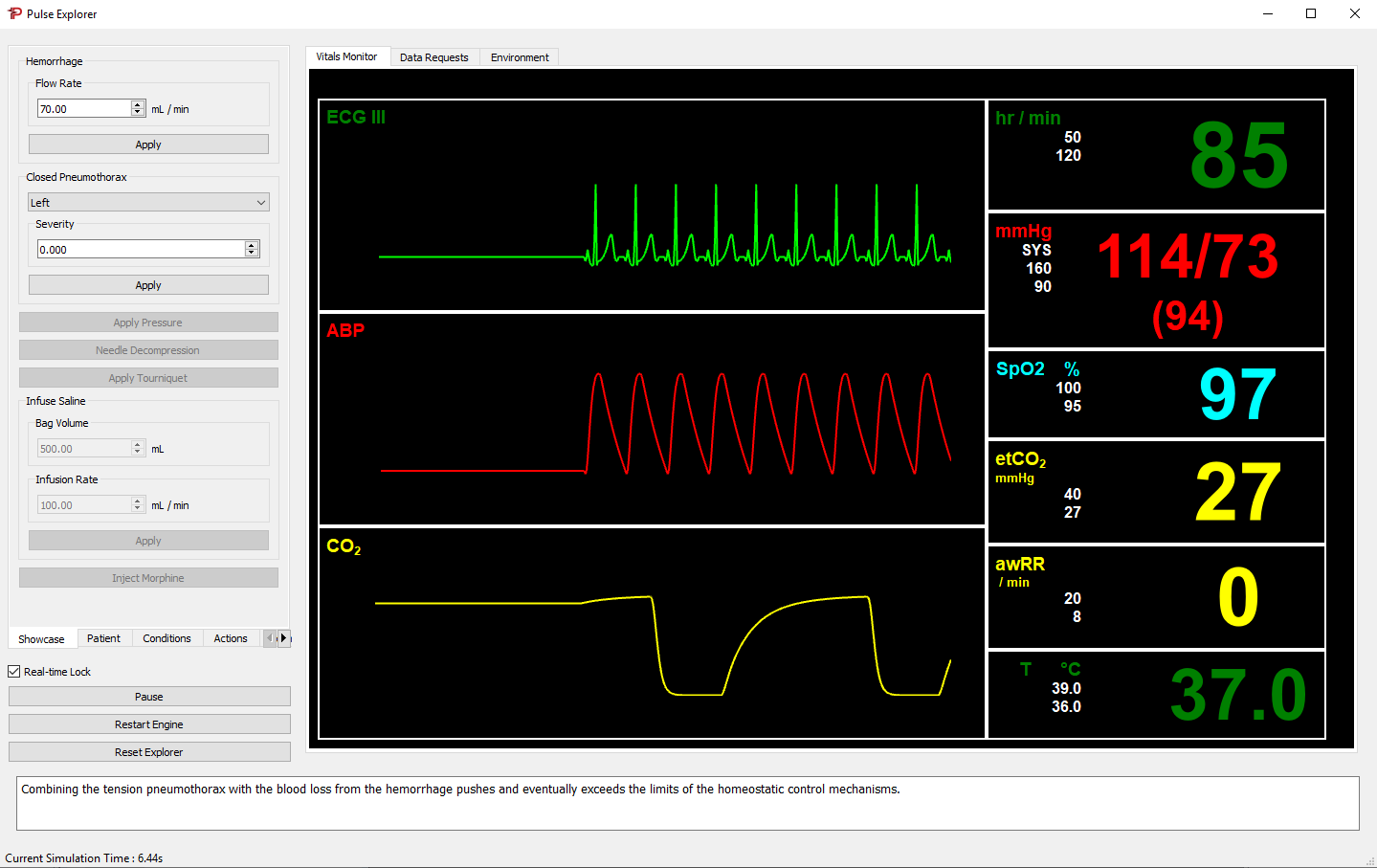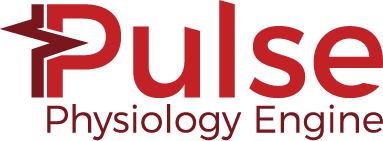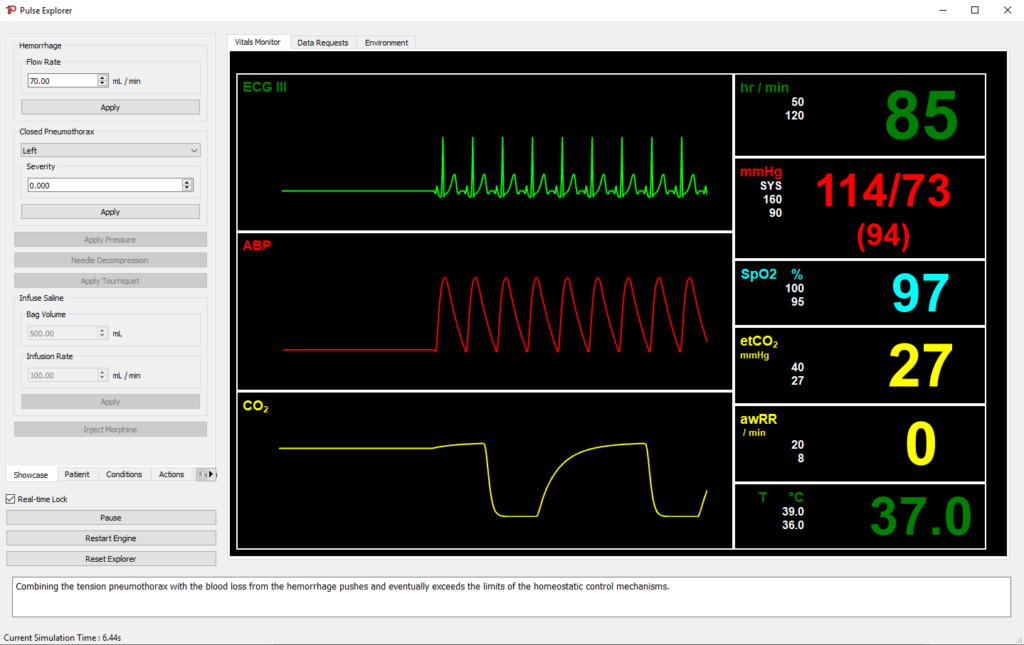Pulse Physiology 2.2.0 Release


On behalf of the Pulse Physiology Community, we are pleased to announce that version 2.2 is now available. Over the past few months, the Pulse team has assisted several companies and universities to integrate Pulse into various applications. We are continuing to work with our customers and collaborators to identify and release additions and improvements to the open Pulse repository for community use. These contributions include bug fixes, architectural changes, and model improvements to brand new physiology models.
For more information on our efforts and our users, visit our website. If you would like to feature your Pulse use case, please email us at kitware@kitware.com.
The 2.2 release includes :
- Updated vascular effects caused by respiratory pleural cavity imbalances, mainly to increased venous return resistance when the patient has a pneumothorax / collapsed lungs.
- New equipment models to provide supplemental oxygen through a nasal cannula, simple mask, and non-rebreather mask.
- Improved CMake configuration for better integration with external applications
- Minor interface improvements for retrieving data and events from Pulse
Recent collaborations with UNC computer science students has expanded the functionality of our Pulse Explorer application. The Explorer now provides users with the ability to dynamically experiment with various actions and view real-time plots of computed Pulse data.

In the coming months, we are working to improve and extend Pulse with:
- Sepsis,
- Hypovolemic shock,
- Acute Respiratory Distress (ARDS),
- Respiratory fatigue and chronic condition exacerbation,
- Surface area and efficiency parameters for the gas diffusion model,
- A second order baroreceptor model,
- A pediatric physiology prototype
We will also make modularity improvements for system/model/circuit swapping.
For an overview of Pulse and what it can do, visit our website at https://pulse.kitware.com.
See all the Pulse repositories, including our Pulse Explorer, at https://gitlab.kitware.com/physiology.
If your are using Unity for your medical simulation development, check out the Pulse Unity Asset for easy integration.Let us know how Pulse can better support your modeling and simulation needs on our discourse channel or email kitware@kitware.com.